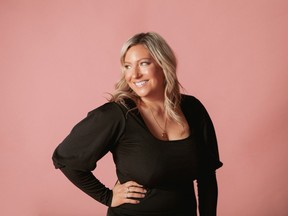Duro Olowu Spring 2026 Ready-to-Wear Collection

A week out from London’s Fashion Awards, Duro Olowu, holed up in a red-lit Chelsea apartment dotted with leopard furnishings, is in a reflective mood while unveiling his spring 2026 collection. He isn’t going to this year’s Royal Albert Hall extravaganza, but he remembers 2004’s quieter ceremony at the V&A when the Best New Designer accolade was bestowed upon him despite never having staged a runway show. Olowu is still the only designer to have been recognized by the British Fashion Council for going his own way and showing off-schedule in a friend’s plush pad, rather than via the traditional runway route. It is a testament to his character and talent that, over 20 years later, editors still gather on cheetah-print sofas to hear him tell the latest instalment of his story.
“Everything good came from somewhere, and you don’t know where you’re going until you know where you’re from,” he shares, introducing his two muses of the season: the inimitable American singer Eartha Kitt, whom Olowu’s father loved, and the Parisian born Venezuelan artist Marisol Escobar, who was known for sculptures imbued with social critique and a vibrant sense of personal style, catnip for dedicated colorists, like Olowu. But if Olowu’s new palette is borrowed from Escobar and the effortlessly elegant aesthetic is a nod to Kitt, then the detail is all Duro.
Olowu is the kind of designer who is passionate about pocket placement. He has a WhatsApp group dedicated to the precise position of his prints, which, he laughs, drives his pattern cutters crazy. “People say, ‘Oh, it’s couture, it’s couture’, but, I say, ‘It’s just great shapes and nice fabric’,” he says. “What I like to try and do is to give the feel of something light that is like couture, but not make it seem so.”
Despite the well considered sets, such as a memorable bulbous caped jacket and peplum dress made from lace mounted on shiny black taffeta, Olowu is not religious about his clients wearing full looks. In fact, he positively encourages mixing and matching old and new clothes and wearing his pieces, rather than saving them for best. In his hand-gathered, cinched-waist summer dresses, fluid shirting, and tulip-bulb sleeved, back-pleated jackets, his clients will look effortlessly put-together even if, as he says, they are taking the bus.
Of his quest to bring his ever-evolving pool of references (an hour in Olowu’s company is better than any BBC doc) into the now, he says “I like the idea of vintage, but I don’t like the idea of retro. My thing was to show that a long skirt can also be liberating. And that you can cinch in the waist of a jacket a bit to make it practical without any corsetry or constraining things.” Olowu had help on that front. A decade ago, when faced with a belting conundrum, he flicked through the Yellow Pages and found a Stockwell-based maker named Carol, who has nipped in the best of them from her own beautiful rambling home in South London.
Olowu’s belts for spring 2026? Perfect fabric lengths to elevate easy day dresses, including his personal favorite: a black midi composed of strips of brocade and hammered silk paneled together in inky harmony. “I love it, I really love it, because it’s sort of like someone who is serious, but also feels joy,” he says. “I think that’s something women have that is very specific to them; this ability to evoke feelings in clothes.” Looking at Olowu’s own joyful work, it is impossible not to think and feel. Even if it’s just mulling over the notion that his exquisitely cut black summer dress is the epitome of loveliness.
link


:max_bytes(150000):strip_icc()/03-Wedding-Outerwear-Mashaida-77ff92fef1114a5bb30e6d1ca112b31f.jpg)



